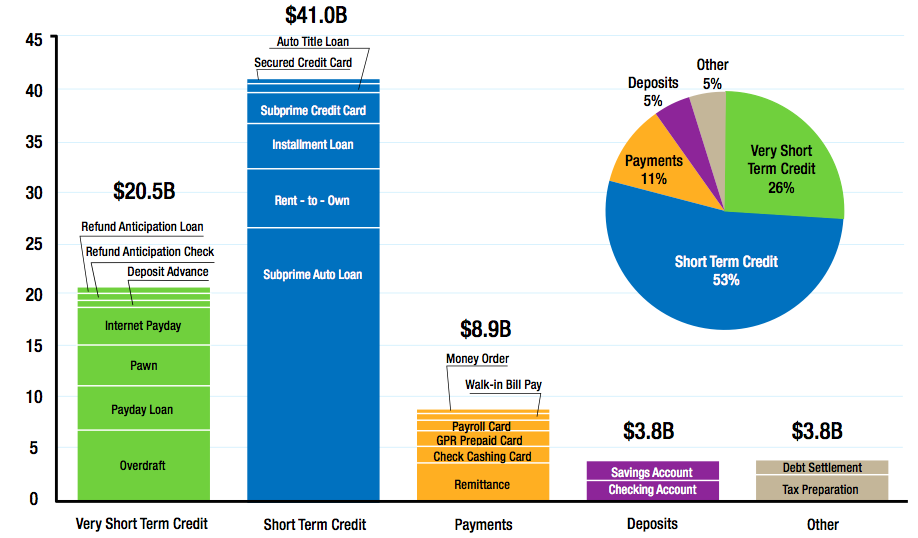People generally assume serving the underbanked is a noble thing to do. And it is, if you do it right. You can make an incredible difference in the lives of a quarter of the US population by providing them with better tools with which to spend, borrow, plan and save. Check out CFSI’s Compass Principles if you’re looking for a roadmap on “doing it right.”
But I am not noble. I’m a capitalist. And for the third year in a row, I’ve been tracking the size of the underbanked opportunity. We all know it’s a lot of people (but then, many people have brown eyes). We all know their lives aren’t easy (so they should help themselves, or charities can help those who can’t help themselves). We assume that in aggregate they earn and move lots of money (over $1 trillion, in case you were curious). We hear immigrants send tens of billions abroad and cash billions of checks. But how much do people who rely primarily on alternatives to banks actually spend on fees and interest for basic financial services is the final measure of whether there is a market here. The answer, of course, is yes, big time.
About $78 billion was spent in 2011 by members of the American emerging middle class – also known as the underbanked – on fees and interest on basic consumer products. Together with my partners at CFSI (and thanks to the sponsorship from Morgan Stanley and Herculean efforts of CFSI’s Summer Associate Eva Wolkowitz), we updated last years’ study entirely. We took out some stuff, added in some stuff, mined all the best research out there, validated it with public data and insider insights. The result is impressive, I think. You can download it here.
Rather than regurgitate what you can read in the Knowledge Brief we’ve made for your reading enjoyment, I will instead focus on my point of view about all this. $78billion – so what?
First of all, it is a lot. To put it in perspective, this means that a quarter of the US population spends about 7% of their hard-earned paychecks just to conduct their financial lives. Ignoring management fees on securities and such, I would estimate I personally spend about negative 1-2% on my financial life. Right, I earn money to house it somewhere, pay my bills, service my credit and purchase the things I need.
Second, this is just scratching the surface. We left out costs associated with long-term debt like mortgages and education, any kind of insurance, or any costs associated with the small businesses millions of people run to stay afloat.
Third, it’s incredibly inefficient. A huge amount of this relates to high losses and high fixed-overhead. The Digitization of Everything has yet to arrive here at scale. Just look at subprime auto-lending here – $26 billion in fees and interest here alone. This is a securitized loan. But imagine the cost to go repossess a car if someone fails to pay. Better, smarter underwriting – like that of innovator Neo Loan – along with a $5 widget that would turn off the car when a payment is missed, would dramatically decrease defaults and program management costs.
What if we could drive efficiencies that offer more people better service and cost them only $39 billion in fees and interest, in a way that yields better gross margin and puts $39 billion back into the economy? This is no Herculean task. Ping Core if you’re working on it. You can be noble and capitalist.
